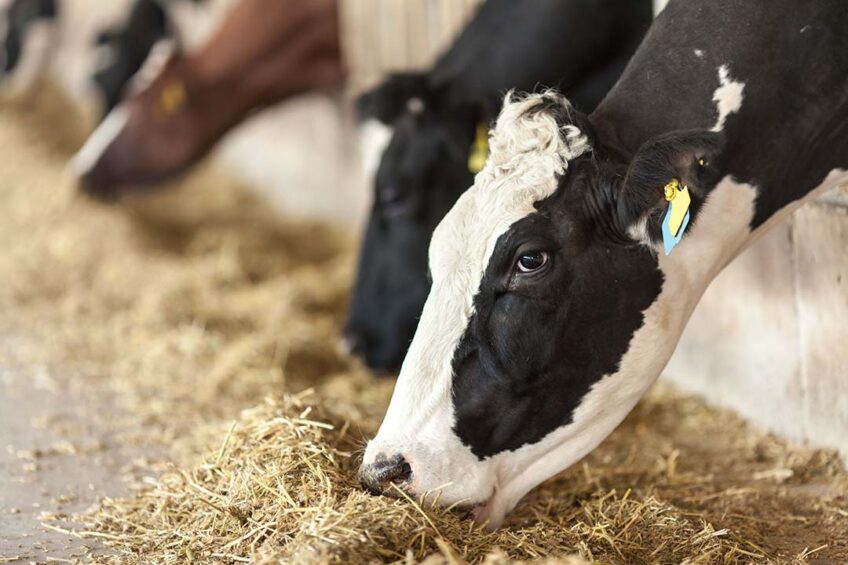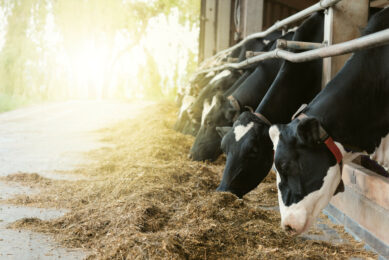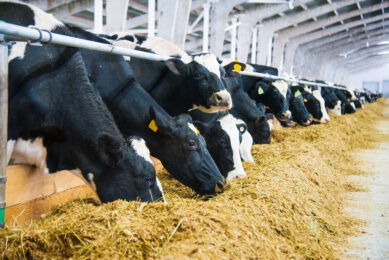Amino acids to mitigate heat stress in ruminants

In their study published in the journal Animal Frontiers, researchers suggested that, besides breeding efforts for heat tolerance in ruminants, combining heat abatement strategies with the supply of specific amino acids may help maintain health, metabolism, and production during periods of heat stress.
The global livestock industry currently faces the ongoing challenge of heat stress emanating from escalating global temperatures, coupled with the high metabolic heat increment of highly genetic merit cattle. Although tackling the negative impact of high temperatures requires multiple management approaches, knowledge of physiological mechanisms that are altered by heat stress is equally valuable.
Reports show heat stress in dairy and beef cattle is characterised by oxidative stress, inflammation, endoplasmic reticulum stress, and increased gut permeability, all of which can be assessed through tissue and systemic biomarkers. In the current study, researchers combined the results of various research findings to understand the potential of dietary amino acids in abating the negative effects of heat stress in ruminants.
Ruminal responses to heat stress
According to the researchers, heat stress decreases post-ruminal nutrient supply, deteriorates the ruminal and intestinal mucosa, and facilitates the translocation of bioactive molecules into the bloodstream. In a nutritional context, heat stress leads to the up-regulation of genes encoding enzymes in metabolic pathways associated with amino acid metabolism, fatty acid degradation, and glycolysis.
It is observed that during sustained heat stress, restoring the normal ruminal epithelial tissue morphology takes precedence, but there is also repartitioning of nutrients such as amino acids, fatty acids, and butyrate towards energy production to sustain the increase in ‘repair’ of the damaged epithelium. This leads to a depletion of energy-generating nutrients to the mammary gland and a reduction in milk synthesis and yield.
Dietary amino acid supply during heat stress
To highlight the potential of amino acids in mitigating heat stress in cattle, the researchers highlighted the results of different research work. In one study, when compared with diets equivalent in metabolisable protein, increasing dietary proportions of lysine, methionine, and histidine reduced rectal temperature in heat-stressed cows with a temperature-humidity index (THI) between 76 and 82.
In a subsequent study, the same authors reported increased oxidation rates of amino acid such as leucine in heat-stressed cows relative to pair-fed, an effect which was reversed by amino acid supplementation.
In a similar study, a post-ruminal supply of methionine during heat stress helped maintain insulin-signalling homeostasis and the gluconeogenic state of the liver; the same cows had a lower decrease in milk yield and milk fat compared with the pair-fed thermoneutral controls.
Heat stress induces loss of intestinal barrier integrity allowing for the paracellular transport of endotoxins such as lipopolysaccharide into the bloodstream leading to the activation of the innate immune system and systemic inflammation. In growing beef steers, an lipopolysaccharide challenge led to decreases in plasma concentrations of methionine, lysine, leucine, isoleucine, phenylalanine, tryptophan, glycine, serine, and asparagine, while the acute phase protein ‘haptoglobin’ and tumour necrosis-alpha increased 3-fold.
It was concluded that inflammation, oxidative stress, and misfolding of cellular proteins are major physiological markers of heat stress which induce the diversion of amino acids away from productive purposes, and heat-stressed ruminants could benefit from increases in the post-ruminal supply of amino acids such as arginine, cysteine, leucine, lysine, and methionine. It was also stated that amino acids such as methionine and arginine are involved in the synthesis of polyamines that have antioxidant properties.
Omics data could help
In this study, the researchers highlighted how ‘Omics’ tools could allow the discovery of physiological mechanisms that can be manipulated via the supply of specific amino acids to alleviate the impact of heat stress. They used 2 datasets focused on the effect of heat stress on transcriptome profiles (gene expression) in dairy cow mammary and liver tissue to identify common and unique patterns in metabolic processes. When examining shared differentially expressed genes in the mammary and liver of cows undergoing heat stress, results showed a different pattern in terms of up-regulated/down-regulated pathways, with most of the metabolic pathways being down-regulated in mammary tissue and up-regulated in liver tissue.
In the liver, besides ‘energy metabolism’ which had the largest up-regulation among metabolic pathways, most pathways related to ‘amino acid metabolism’ with cysteine, methionine, histidine, tryptophan, and glutathione metabolism being the most impacted and up-regulated pathways. This highlighted the unique function of the liver during heat stress, that is, to generate glucose and use amino acids for the immune and antioxidant response.
The unique aspects of the mammary tissue transcriptional response to heat stress were the up-regulation of ‘cellular processes’ (e.g., ‘cell growth and death’) and ‘environmental information processing’ (e.g., ‘membrane transport’). These results closely resembled those of the ruminal epithelium transcriptome in heat-stressed lactating cows experiencing sloughing of the rumen stratum corneum.
Implications of the study
To highlight the implications of their study, the researchers first stated that although the main production outcomes associated with heat stress in ruminants are well-known, physiological impacts beyond the main endocrine and metabolic effects experienced by the animal can be understood at the organ level. Adding that the vast amount of data – such as for non-ruminants on the role of specific amino acids as ‘functional nutrients’ to help alleviate the effects of heat stress – offers valuable clues for their application in ruminant production. The researchers summarised the implications of their study as follows:
- High seasonal heat and humidity decrease post-ruminal nutrient supply, deteriorate the ruminal and intestinal mucosa, and facilitate translocation of bioactive molecules such as LPS into the bloodstream.
- Inflammation, oxidative stress, and misfolding of cellular proteins are major physiological biomarkers of heat and humidity stress and divert amino acid use away from productive purposes.
- Heat-stressed ruminants could benefit from increases in the post-ruminal supply of arginine, cysteine, leucine, lysine, and methionine. Several indispensable and dispensable amino acids generate antioxidants through processes such as one-carbon metabolism.
- ‘Omics’ tools are allowing the discovery of physiological mechanisms that can be manipulated via the supply of specific amino acids to alleviate the impact of heat stress.
*This article is based on the original article by Juan J. Loor, Vincenzo Lopreiato, Valentino Palombo, and Mariasilvia D’Andrea. 2023. Physiological impact of amino acids during heat stress in ruminants. Animal Frontiers, 13 (5): 69–80.
Join 13,000+ subscribers
Subscribe to our newsletter to stay updated about all the need-to-know content in the dairy sector, two times a week.










